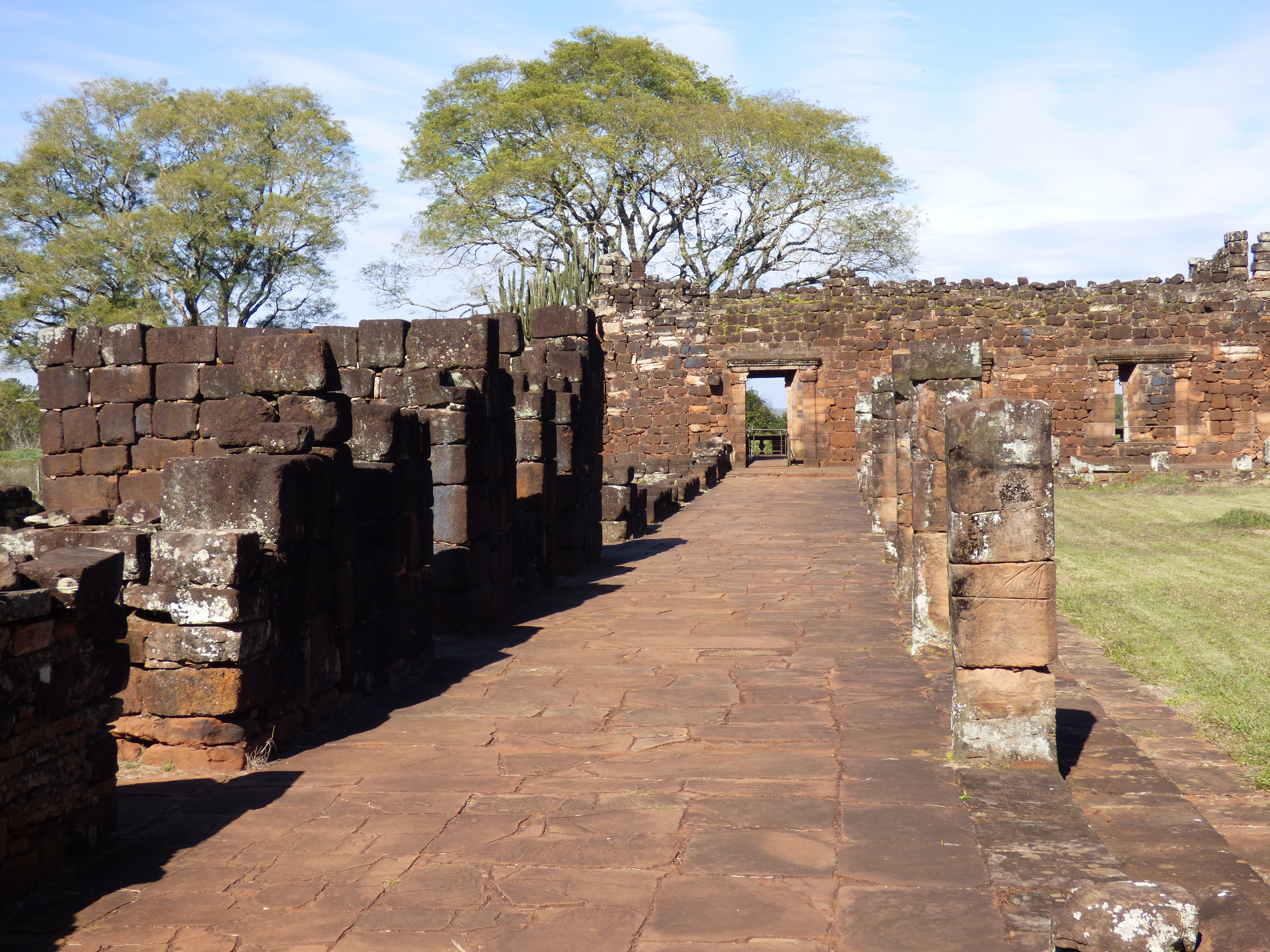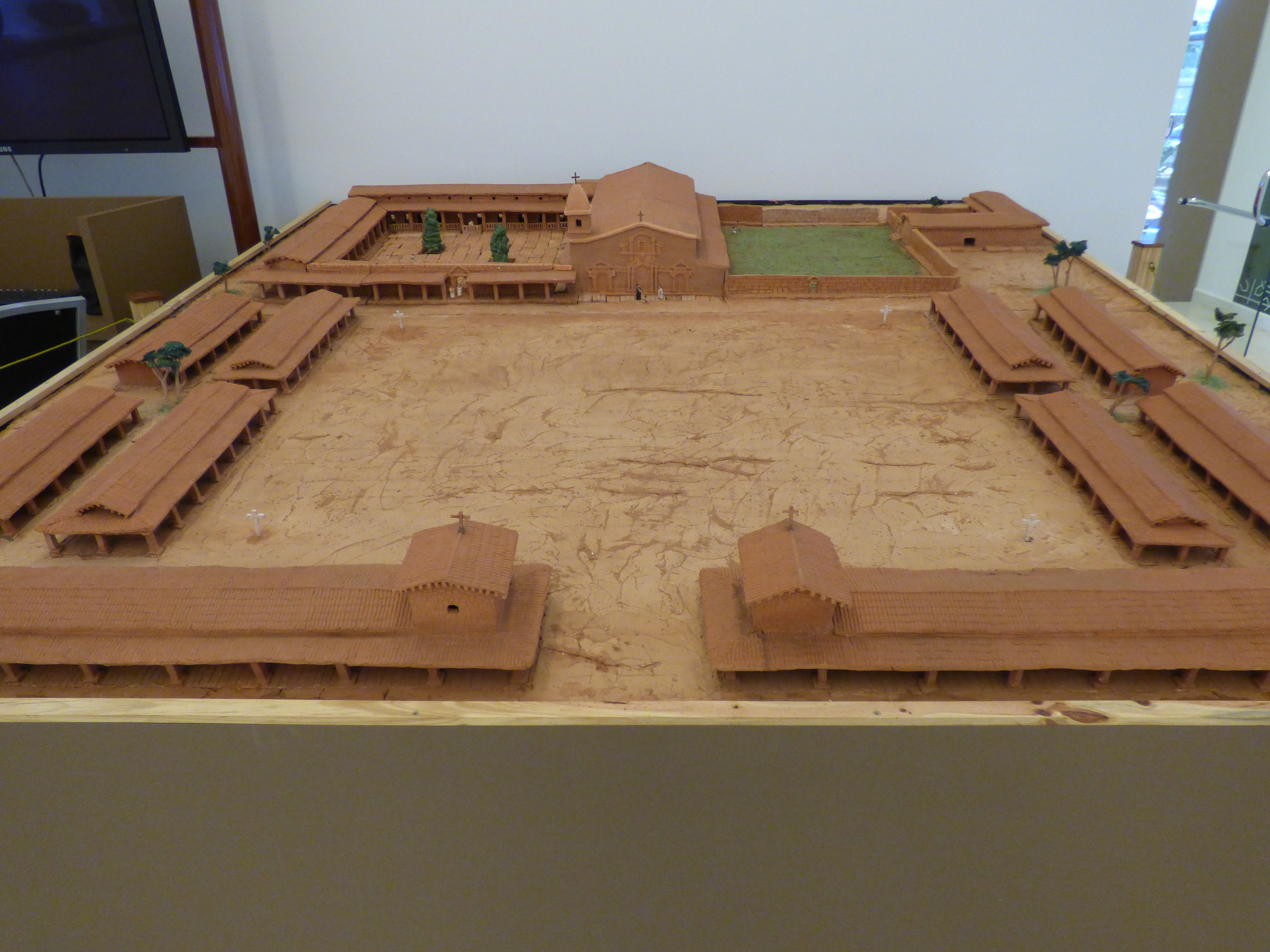Described as one of the world’s’ great social experiments, the Jesuit missions (‘reducciones’) were first established in the jungles of South America in 1609. Set up in remote locations, priests would use the mission to establish a community made up of local tribes people (‘Guarani’) whom they would evangelise and educate and at the same time provide protection from local slavers (‘bandeirantes’) who regularly sought slaves for their sugar cane plantations.
San Ignacio Mini (one of 15 missions set up in Argentina) was first founded in northern Brazil in 1610, but was later abandoned in 1632 after repeated attacks by slavers. It was subsequently re-established in 1696 near the San Ignacio Valley, some 60 km north of Posadas in the northeastern Misiones province.
Like many other missions, it consisted of a large central plaza dominated by the church (with cloisters) and colegio which housed the priests (usually only two), and also contained workshops and storerooms. Other buildings in the settlement would include the houses of the Guarani (in neat rows), a hospital, a house for widows and abandoned wives, and a cabildo where the Guarani chief would live.
At its peak San Ignacio was thought to have a population of around 4000 people. The settlement would have been self-sufficient as the Guarani were taught agricultural skills as well as wood and stone working skills. In addition they embraced European culture producing music, sculpture and paintings in the so called ‘Guarani baroque’ style.
Following the lead of Portugal and France, King Carlos III of Spain expelled the missions from his dominions in 1767. This was due to a number of reasons, including resentment or envy from the colonial authorities and local settlers and a feeling that the Jesuits were more loyal to their own ideas than those of the crown. Initially the Guarani maintained the settlements but with the priests gone the communities were vulnerable and gradually they dispersed leaving the missions to decay and become ruins. San Ignacio was eventually rediscovered in 1897 and then restored between 1940 and 1948.
Today it is a popular and interesting visitor attraction that offers the most complete Jesuit ruins in Argentina with some notable carved ornamentation in the ‘Guarani baroque’ style. In addition, there is a small interpretation centre providing some history about the site, a model showing how the mission would have looked and some artefacts found locally. The entrance fee is approximately £10.00 per person, including an English speaking guide.









